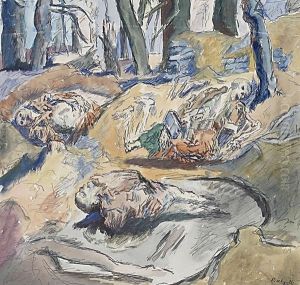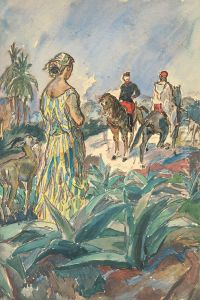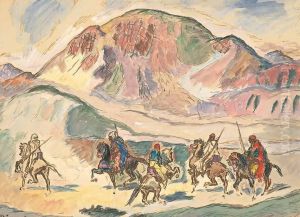Rene Beeh Paintings
René Beeh was a German artist known for his paintings, drawings, and graphic works. Born on November 17, 1886, in Strasbourg, which at the time was part of the German Empire, Beeh demonstrated artistic talent from a young age. His early life was spent in Strasbourg, where he was exposed to the city's rich cultural heritage, a blend of German and French influences that would later be reflected in his artistic style.
Beeh pursued his artistic education at the School of Arts and Crafts in Strasbourg before moving to Munich, which was a vibrant artistic hub in the early 20th century. In Munich, he continued his studies at the Royal Bavarian Academy of Fine Arts under the tutelage of prominent artists such as Gabriel von Hackl and Angelo Jank. His time in Munich allowed him to immerse himself in the burgeoning art scene and to interact with other artists, critics, and patrons.
The artist's work was characterized by a strong emphasis on line and form, and he was particularly adept at capturing the human figure with a dynamic sense of movement and expression. Beeh was associated with German Expressionism, a movement that emerged in the early 20th century and sought to convey emotional experience rather than physical reality. This movement was marked by the use of bold colors, distorted forms, and dramatic, sometimes grotesque, imagery.
During World War I, Beeh served in the German army, and his experiences during the war influenced his art. He produced a series of works that depicted the horrors of war, which were noted for their emotional intensity and stark portrayal of the human condition. After the war, Beeh's style continued to evolve, and he experimented with various techniques and media.
Tragically, René Beeh's life was cut short when he died from tuberculosis on February 5, 1922, at the age of 35. Although his career was brief, his contributions to German Expressionism and his poignant depictions of the human experience left a lasting impact on the art world. Beeh's works are held in various collections and continue to be studied and appreciated for their emotional depth and technical skill.


